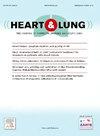GLP-1类似物对既往存在心血管疾病的肥胖和超重患者的心脏代谢影响:随机对照试验的系统回顾和荟萃分析
IF 2.6
4区 医学
Q2 CARDIAC & CARDIOVASCULAR SYSTEMS
引用次数: 0
摘要
背景:肥胖与心血管(CV)疾病密切相关,是全球日益关注的问题。生活方式干预往往被证明是不够的,这推动了人们对GLP-1类似物(GLP1a)等新疗法的兴趣。目的:本研究评估GLP1a在肥胖和既往心血管疾病患者中的疗效。方法:在PubMed, Scopus和Cochrane数据库中进行系统搜索,确定了比较GLP1a与安慰剂降低CV风险的随机对照试验。采用Review Manager 5.4.1进行统计分析,对异质性较高的结果采用随机效应模型。使用RoB 2来评估偏倚风险。结果:纳入4项随机对照试验,共19480例患者,其中9740例患者接受GLP1a治疗。GLP1a组显示全因死亡率降低(OR, 0.82;95% ci, 0.72-0.94;p = 0.004)和腰围(MD, -7.02;95% ci, -8.31—5.84;p & lt;0.00001)。收缩压也显著降低(MD, -3.32;95% ci, -3.76—2.89;p & lt;0.00001),严重不良事件(OR, 0.7;95% ci, 0.5-0.99;p = 0.04),以及因心力衰竭住院(OR, 0.47;95% ci, 0.25-0.89;P = 0.02)。c反应蛋白(CRP)水平显著降低(MD, -36.92;95% ci, -39.56—34.27;p & lt;0.00001)。然而,cv相关死亡率无显著差异(OR, 0.85;95% ci, 0.71-1.02;P = 0.08)。结论:GLP1a降低了全因死亡率、腰围、收缩压和CRP水平,突出了其治疗心血管疾病的潜力。本文章由计算机程序翻译,如有差异,请以英文原文为准。
Cardiometabolic effects of GLP-1 analogs in obese and overweight patients with preexisting cardiovascular disease: A systematic review and meta analysis of randomized controlled trials
Background: Obesity is escalating global concerns, strongly associated with cardiovascular (CV) diseases. Lifestyle interventions often prove insufficient, driving interest in new treatments like GLP-1 analogs (GLP1a). Objectives: This study assesses the efficacy of GLP1a in patients with obesity and pre-existing CV disease. Methods: A systematic search in PubMed, Scopus, and Cochrane databases identified randomized controlled trials comparing GLP1a with placebo for CV risk reduction. Statistical analyses were conducted using Review Manager 5.4.1, employing a random-effects model for outcomes with high heterogeneity. RoB 2 was used to assess the risk of bias. Results: Four RCTs with 19,480 patients were included, 9740 of whom received GLP1a. The GLP1a group showed reduced all-cause mortality (OR, 0.82; 95 % CI, 0.72–0.94; p = 0.004) and waist circumference (MD, -7.02; 95 % CI, -8.31–-5.84; p < 0.00001). Significant decreases were also observed in systolic blood pressure (MD, -3.32; 95 % CI, -3.76–-2.89; p < 0.00001), serious adverse events (OR, 0.7; 95 % CI, 0.5–0.99; p = 0.04), and hospitalization for heart failure (OR, 0.47; 95 % CI, 0.25–0.89; p = 0.02). C-reactive protein (CRP) level levels were significantly lower (MD, -36.92; 95 % CI, -39.56–-34.27; p < 0.00001). However, no significant difference was observed for CV-related mortality (OR, 0.85; 95 % CI, 0.71–1.02; p = 0.08). Conclusions: GLP1a reduces all-cause mortality, waist circumference, systolic blood pressure and CRP levels, highlighting its therapeutic potential for CV disease.
求助全文
通过发布文献求助,成功后即可免费获取论文全文。
去求助
来源期刊

Heart & Lung
医学-呼吸系统
CiteScore
4.60
自引率
3.60%
发文量
184
审稿时长
35 days
期刊介绍:
Heart & Lung: The Journal of Cardiopulmonary and Acute Care, the official publication of The American Association of Heart Failure Nurses, presents original, peer-reviewed articles on techniques, advances, investigations, and observations related to the care of patients with acute and critical illness and patients with chronic cardiac or pulmonary disorders.
The Journal''s acute care articles focus on the care of hospitalized patients, including those in the critical and acute care settings. Because most patients who are hospitalized in acute and critical care settings have chronic conditions, we are also interested in the chronically critically ill, the care of patients with chronic cardiopulmonary disorders, their rehabilitation, and disease prevention. The Journal''s heart failure articles focus on all aspects of the care of patients with this condition. Manuscripts that are relevant to populations across the human lifespan are welcome.
 求助内容:
求助内容: 应助结果提醒方式:
应助结果提醒方式:


